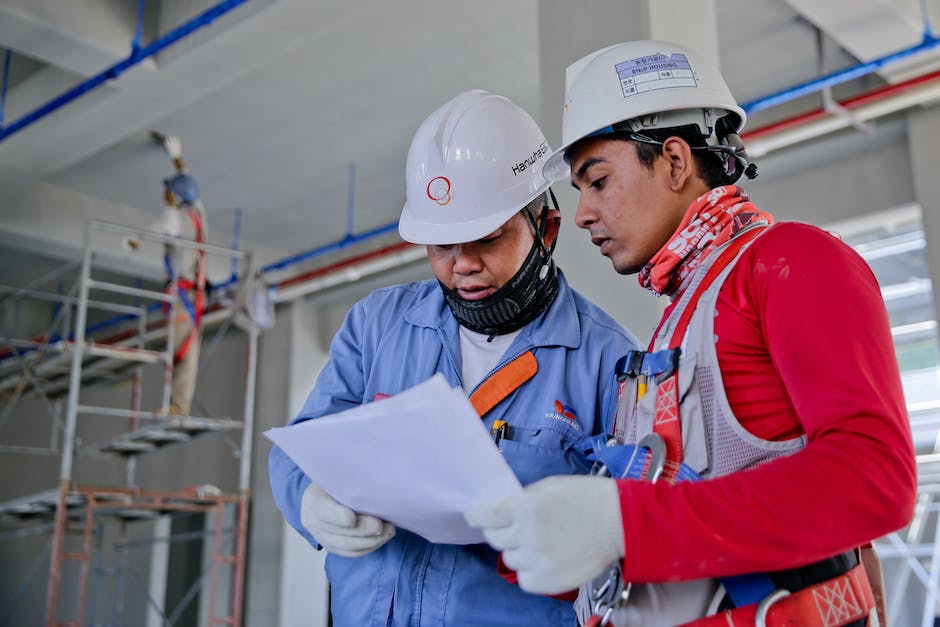Table of Contents
- Introduction
- Implementing Effective Safety Training Programs for Frontline Workers
- Developing and Enforcing Safety Policies and Procedures
- Providing Adequate Personal Protective Equipment (PPE) for Frontline Workers
- Establishing Regular Communication Channels for Safety Updates and Reporting
- Q&A
- Conclusion
“Prioritizing Safety: HR’s Commitment to Protecting Frontline Workers”
Introduction
Introduction:
Ensuring the safety of frontline workers is of utmost importance, especially in today’s challenging times. Human Resources (HR) plays a crucial role in implementing measures to protect frontline workers and create a safe working environment. By taking proactive action steps, HR can effectively address the unique safety concerns faced by frontline workers. This article will discuss HR’s role in ensuring frontline workers’ safety and provide actionable steps that HR professionals can take to protect and support these essential employees.
Implementing Effective Safety Training Programs for Frontline Workers

Implementing Effective Safety Training Programs for Frontline Workers
Ensuring the safety of frontline workers is a top priority for any organization. These employees are the backbone of the company, often facing hazardous conditions and potential risks on a daily basis. To mitigate these risks and protect the well-being of frontline workers, HR departments play a crucial role in implementing effective safety training programs.
The first step in developing a successful safety training program is to conduct a thorough risk assessment. This involves identifying potential hazards and evaluating the likelihood and severity of each risk. By understanding the specific dangers faced by frontline workers, HR can tailor the training program to address these specific concerns.
Once the risks have been identified, HR can begin developing the content for the safety training program. It is important to ensure that the training materials are clear, concise, and easy to understand. Frontline workers often have varying levels of education and experience, so it is crucial to present the information in a way that is accessible to all employees.
In addition to the content, the delivery method of the training program is also important. Traditional classroom-style training may not be the most effective approach for frontline workers who are often on the move or working in remote locations. Utilizing technology, such as online training modules or mobile apps, can provide flexibility and accessibility for these employees.
To reinforce the training, HR should consider incorporating hands-on exercises and simulations. This allows frontline workers to practice applying the safety procedures in a controlled environment. By providing opportunities for practical application, employees are more likely to retain the information and feel confident in their ability to handle real-life situations.
Regular refresher courses are also essential to ensure that frontline workers stay up-to-date with the latest safety protocols. As new risks emerge or procedures change, HR should provide ongoing training to keep employees informed and prepared. This can be done through regular safety meetings, newsletters, or online resources.
To gauge the effectiveness of the safety training program, HR should establish key performance indicators (KPIs) and regularly evaluate the program’s impact. This can be done through surveys, incident reports, or observations. By collecting data and analyzing the results, HR can identify areas for improvement and make necessary adjustments to the training program.
In addition to the training program itself, HR should also focus on creating a culture of safety within the organization. This involves fostering open communication channels where frontline workers feel comfortable reporting safety concerns or near misses. HR should also recognize and reward employees who demonstrate a commitment to safety, further reinforcing the importance of following proper procedures.
Lastly, HR should ensure that frontline workers have access to the necessary safety equipment and resources. This includes providing personal protective equipment (PPE), such as helmets, gloves, or safety goggles, as well as implementing safety protocols and procedures. By equipping employees with the tools they need to stay safe, HR can further reduce the risk of accidents or injuries.
In conclusion, implementing effective safety training programs for frontline workers is crucial for ensuring their well-being and mitigating potential risks. HR plays a vital role in this process, from conducting risk assessments to developing training content and delivery methods. By creating a culture of safety and providing ongoing support, HR can help protect frontline workers and create a safer work environment for all.
Developing and Enforcing Safety Policies and Procedures
Ensuring Frontline Workers’ Safety: HR’s Role and Action Steps
Developing and Enforcing Safety Policies and Procedures
In today’s fast-paced and ever-changing work environment, ensuring the safety of frontline workers is of utmost importance. Human resources (HR) departments play a crucial role in developing and enforcing safety policies and procedures that protect employees and minimize workplace hazards. By implementing effective safety measures, HR professionals can create a secure and productive work environment for frontline workers.
To begin with, HR departments must conduct a thorough risk assessment to identify potential hazards in the workplace. This assessment involves examining the physical environment, equipment, and work processes to determine any potential risks that could harm frontline workers. By identifying these risks, HR professionals can develop targeted safety policies and procedures to address them.
Once the risks have been identified, HR departments should collaborate with frontline workers and supervisors to develop comprehensive safety policies and procedures. This collaborative approach ensures that the policies and procedures are practical and align with the needs and realities of the frontline workforce. By involving frontline workers in the process, HR professionals can gain valuable insights into the specific challenges they face and tailor safety measures accordingly.
After the policies and procedures have been developed, HR departments must ensure their effective implementation. This involves providing clear and concise communication to frontline workers about the safety measures in place. HR professionals should conduct training sessions to educate employees on the policies and procedures, emphasizing the importance of adhering to them. Regular refresher training sessions should also be conducted to reinforce safety protocols and address any new risks that may arise.
In addition to training, HR departments should establish a system for reporting and investigating safety incidents. This system should encourage frontline workers to report any safety concerns or incidents promptly. HR professionals should then conduct thorough investigations to determine the root causes of these incidents and take appropriate corrective actions. By addressing safety concerns promptly and effectively, HR departments can prevent future incidents and create a culture of safety in the workplace.
Furthermore, HR departments should regularly review and update safety policies and procedures to ensure their continued effectiveness. As workplaces evolve, new risks may emerge, and existing safety measures may become outdated. By staying proactive and responsive to changing circumstances, HR professionals can adapt safety policies and procedures to address emerging risks and protect frontline workers.
To enforce safety policies and procedures effectively, HR departments should establish a system of accountability. This includes monitoring compliance with safety measures and addressing any non-compliance promptly. HR professionals should conduct regular audits and inspections to ensure that frontline workers are following the established protocols. By holding employees accountable for their safety responsibilities, HR departments can create a culture of safety where everyone understands the importance of adhering to safety measures.
In conclusion, HR departments play a vital role in developing and enforcing safety policies and procedures to protect frontline workers. By conducting risk assessments, collaborating with frontline workers, and implementing effective training and reporting systems, HR professionals can create a secure work environment. Regular review and updates of safety measures, along with a system of accountability, further enhance the effectiveness of these policies and procedures. By prioritizing the safety of frontline workers, HR departments contribute to the overall success and well-being of the organization.
Providing Adequate Personal Protective Equipment (PPE) for Frontline Workers
Ensuring Frontline Workers’ Safety: HR’s Role and Action Steps
In the midst of a global pandemic, frontline workers have emerged as the heroes of our society. These brave individuals put their lives at risk every day to provide essential services and keep our communities running smoothly. As organizations navigate the challenges of protecting their employees, the role of Human Resources (HR) becomes crucial in ensuring the safety and well-being of frontline workers. One key aspect of this responsibility is providing adequate Personal Protective Equipment (PPE) for these essential workers.
Personal Protective Equipment, such as masks, gloves, and face shields, plays a vital role in preventing the spread of infectious diseases. For frontline workers who are in direct contact with the public, having access to proper PPE is not just a matter of personal safety, but also a means of safeguarding the health of the entire community. HR departments must take proactive steps to ensure that frontline workers have the necessary PPE to perform their duties safely.
The first action step for HR is to conduct a thorough assessment of the PPE needs of frontline workers. This assessment should take into account the specific tasks and risks associated with each role. For example, healthcare workers may require a higher level of protection compared to grocery store employees. By understanding the unique requirements of each frontline position, HR can develop a comprehensive plan to address PPE needs effectively.
Once the assessment is complete, HR should establish clear guidelines and protocols for the procurement and distribution of PPE. This includes identifying reliable suppliers, ensuring the quality and effectiveness of the equipment, and establishing a system for regular inventory checks. By having a well-defined process in place, HR can streamline the procurement and distribution of PPE, minimizing any delays or shortages that could compromise the safety of frontline workers.
Communication is another critical aspect of providing adequate PPE. HR should regularly update frontline workers on the availability of PPE, any changes in protocols, and provide clear instructions on how to properly use and dispose of the equipment. This communication should be ongoing and transparent, fostering a sense of trust and confidence among frontline workers that their safety is a top priority for the organization.
In addition to providing PPE, HR should also ensure that frontline workers receive proper training on its usage. This includes educating employees on the correct way to wear and remove PPE, as well as providing guidance on maintaining hygiene practices while using the equipment. By investing in training programs, HR can empower frontline workers to protect themselves and others effectively.
Furthermore, HR should establish a feedback mechanism to gather input from frontline workers regarding the adequacy of the provided PPE. This feedback can help identify any gaps or issues that need to be addressed promptly. By actively seeking input from those directly impacted, HR can make informed decisions and continuously improve the safety measures in place.
In conclusion, HR plays a crucial role in ensuring the safety of frontline workers by providing adequate Personal Protective Equipment (PPE). Through a comprehensive assessment of needs, clear guidelines for procurement and distribution, effective communication, training programs, and feedback mechanisms, HR can create a safe working environment for these essential employees. As organizations navigate the challenges of the pandemic, prioritizing the safety of frontline workers should be a top priority, and HR is at the forefront of this effort.
Establishing Regular Communication Channels for Safety Updates and Reporting
In order to ensure the safety of frontline workers, it is crucial for HR departments to establish regular communication channels for safety updates and reporting. This is especially important in industries where workers face potential hazards on a daily basis, such as construction, manufacturing, and healthcare.
Regular communication channels allow HR departments to keep frontline workers informed about any changes in safety protocols, new hazards that may have been identified, and any updates to training programs. By providing this information in a timely manner, HR can help to prevent accidents and injuries in the workplace.
One of the most effective ways to establish regular communication channels is through the use of technology. Many companies now use mobile apps or online platforms to communicate with their employees. These platforms can be used to send out safety updates, provide access to training materials, and allow workers to report any safety concerns or incidents.
By utilizing technology, HR departments can ensure that frontline workers have access to important safety information at all times. This is particularly important for workers who may not have regular access to a computer or email, as they can receive updates and report incidents directly from their mobile devices.
In addition to technology, HR departments should also consider implementing regular safety meetings or toolbox talks. These meetings can be used to provide updates on safety procedures, address any concerns or questions that workers may have, and reinforce the importance of following safety protocols.
By holding regular safety meetings, HR can create a culture of safety within the organization. This can help to ensure that frontline workers are aware of the risks they face and are equipped with the knowledge and tools to mitigate those risks.
Another important aspect of establishing regular communication channels is the creation of a reporting system for safety incidents. HR departments should provide frontline workers with a clear and accessible way to report any safety concerns or incidents that they witness or experience.
This reporting system should be confidential and non-punitive, so that workers feel comfortable coming forward with their concerns. HR should also ensure that all reports are taken seriously and that appropriate action is taken to address any safety issues that are identified.
By establishing a reporting system, HR can gather valuable data on safety incidents and trends within the organization. This data can then be used to identify areas for improvement and to develop targeted training programs or safety initiatives.
In conclusion, establishing regular communication channels for safety updates and reporting is essential for ensuring the safety of frontline workers. By utilizing technology, holding regular safety meetings, and implementing a reporting system, HR departments can keep workers informed, address their concerns, and take action to prevent accidents and injuries. By prioritizing the safety of frontline workers, organizations can create a culture of safety and reduce the risk of workplace incidents.
Q&A
1. What is HR’s role in ensuring frontline workers’ safety?
HR’s role is to develop and implement safety policies and procedures, provide training on safety protocols, conduct regular safety inspections, and ensure compliance with relevant regulations.
2. What are some action steps HR can take to ensure frontline workers’ safety?
HR can conduct risk assessments, provide personal protective equipment (PPE), establish clear communication channels for reporting safety concerns, offer regular safety training, and collaborate with management to address safety issues promptly.
3. How can HR promote a culture of safety among frontline workers?
HR can promote a culture of safety by fostering open communication, recognizing and rewarding safe behaviors, conducting safety awareness campaigns, providing ongoing training and education, and involving frontline workers in safety decision-making processes.
4. How can HR support frontline workers’ mental health and well-being during challenging times?
HR can provide access to mental health resources, offer employee assistance programs, promote work-life balance, encourage regular breaks, provide opportunities for social support, and ensure that frontline workers have access to necessary support systems.
Conclusion
In conclusion, ensuring frontline workers’ safety is a crucial responsibility of HR departments. By implementing effective safety protocols, providing necessary training and resources, and regularly communicating with frontline employees, HR can play a significant role in safeguarding their well-being. Action steps that HR can take include conducting risk assessments, developing comprehensive safety policies, promoting a culture of safety, and continuously monitoring and improving safety measures. By prioritizing frontline workers’ safety, HR can contribute to a healthier and more productive work environment.




